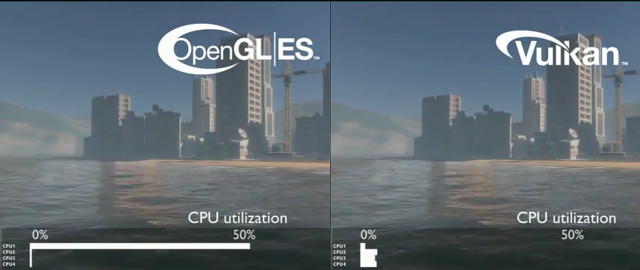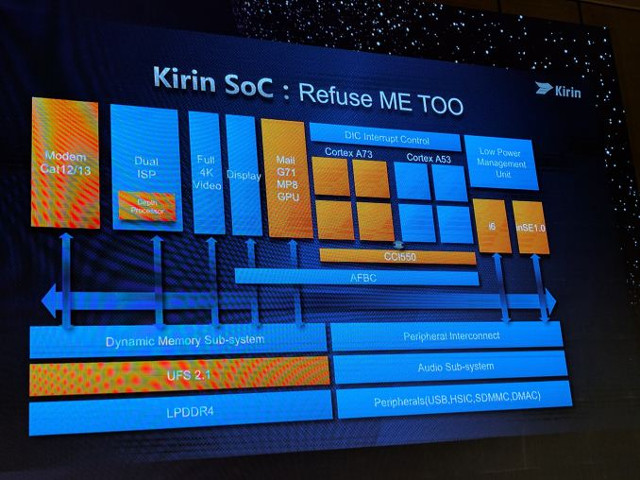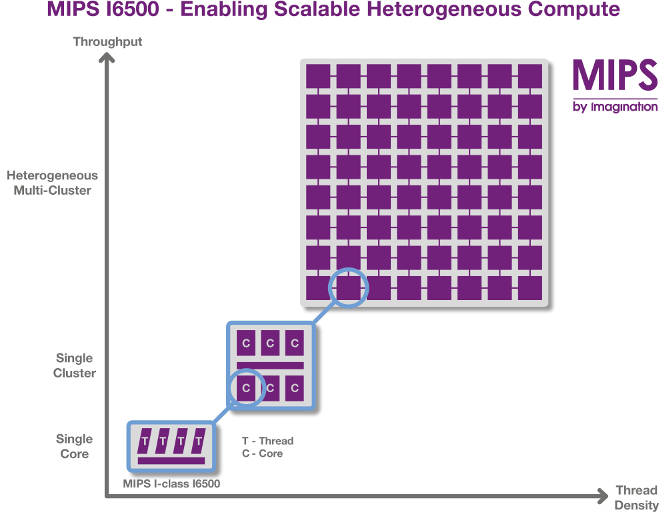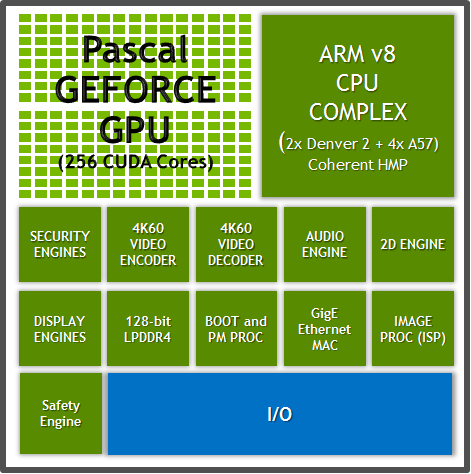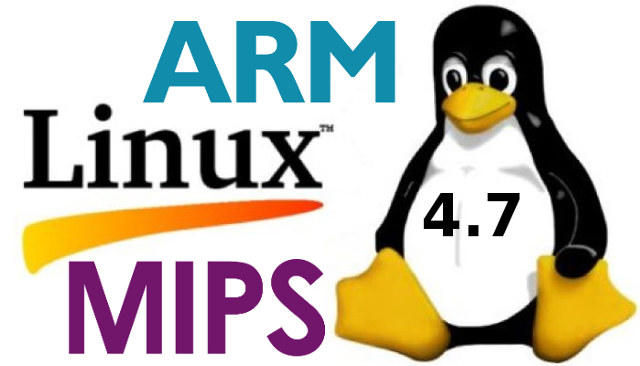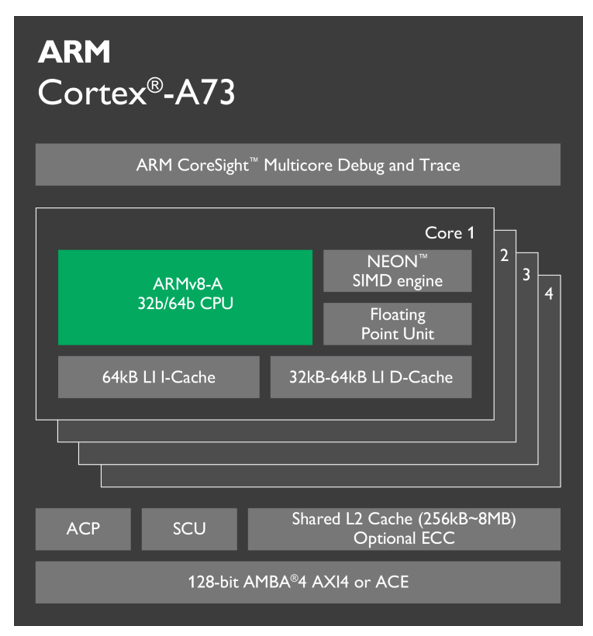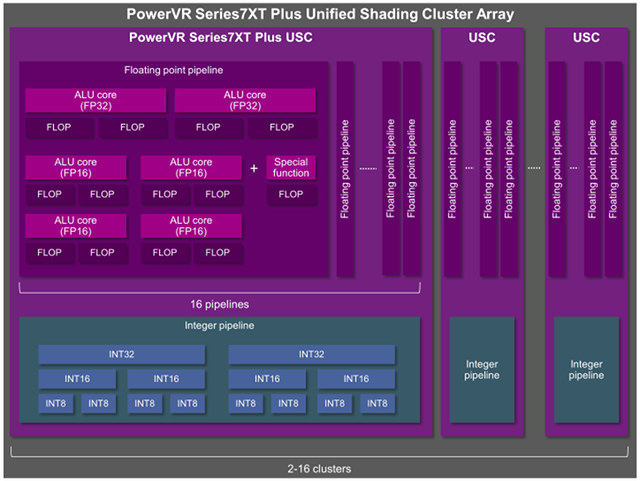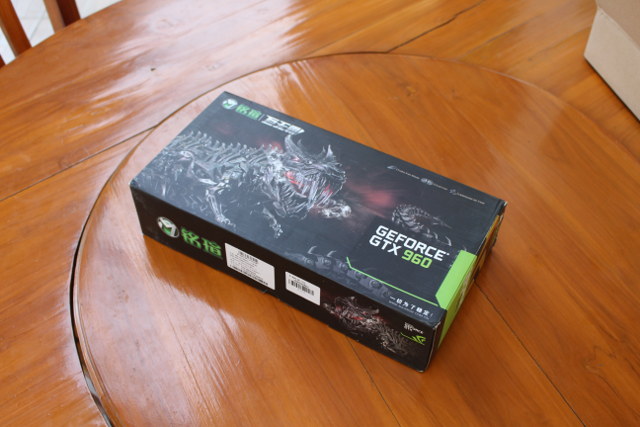Vulkan was introduced as the successor of OpenGL ES in March 2015, promising to take less CPU resources, and support multiple command buffers that can be created in parallel and distributed over several cores, at the cost of slightly more complex application programming since less software work in done inside the GPU drivers themselves with app developers needing to handle memory allocation and thread management. This was just a standard at the time, so it still needed some time to implement Vulkan, and work is still in program but ARM showcased the power efficiency of Vulkan over OpenGL ES in the video embedded at the end of this post. The demo has the same graphics details and performance using both OpenGL ES and Vulkan, but since the load on the CPU in that demo can be distributed over several CPU cores with Vulkan against a single core for OpenGL ES, […]
HiSilicon Kirin 960 Octa Core Application Processor Features ARM Cortex A73 & A53 Cores, Mali G71 MP8 GPU
Following on Kirin 950 processor found in Huawei Mate 8, P9, P9 Max & Honor 8 smartphones, Hisilicon has now unveiled Kirin 960 octa-core processor with four ARM Cortex A73 cores, four Cortex A53 low power cores, a Mali G71 MP8 GPU, and an LTE Cat.12 modem. The table below from Anandtech compares features and specifications of Kirin 950 against the new Kirin 960 processor. SoC Kirin 950 Kirin 960 CPU 4x Cortex A72 (2.3 GHz) 4x Cortex A53 (1.8 GHz) 4x Cortex A73 (2.4 GHz) 4x Cortex A53 (1.8 GHz) Memory Controller LPDDR3-933 or LPDDR4-1333 (hybrid controller) LPDDR4-1800 GPU ARM Mali-T880MP4 @ 900 MHz ARM Mali-G71MP8 @ 900 MHz Interconnect ARM CCI-400 ARM CCI-550 Encode/ Decode 1080p H.264 Decode & Encode2160p30 HEVC Decode 2160p30 HEVC & H.264 Decode & Encode2160p60 HEVC Decode Camera/ISP Dual 14bit ISP 940MP/s Improved Dual 14bit ISP Sensor Hub i5 i6 Storage eMMC 5.0 UFS 2.1 Integrated Modem […]
Imagination Technologies Announces MIPS Warrior I-class I6500 Heterogeneous CPU with up to 384 Cores
Imagination has just unveiled the successor of MIPS I6400 64-Bit Warrior Core with MIPS Warrior I-class I6500 heterogeneous CPU supporting up to 64 cluster, with up to 6 cores each (384 cores max), themselves up to 4 thread (1536 max), combining with IOCU (IO coherence units), and external IP such as PowerVR GPU or other hardware accelerators. The main features of MIPS I6400 processor are listed as follows: Heterogeneous Inside – In a single cluster, designers can optimize power consumption with the ability to configure each CPU with different combinations of threads, different cache sizes, different frequencies, and even different voltage levels. Heterogeneous Outside – The latest MIPS Coherence Manager with an AMBA ACE interface to popular ACE coherent fabric solutions such as those from Arteris and Netspeed lets designers mix on a chip configurations of processing clusters – including PowerVR GPUs or other accelerators – for high system […]
Nvidia Provides More Details About Parker Automotive SoC with ARMv8 Cores, Pascal GPU
Nvidia demonstrated DRIVE PX2 platform for self-driving cars at CES 2016, but did not give many details about the SoC used in the board. Today, the company has finally provided more information about Parker hexa-core SoC combining two Denver 2 cores, and four Cortex A57 cores combining with a 256-core Pascal GPU. Nvidia Parker SoC specifications: CPU – 2x Denver 2 ARMv8 cores, and 4x ARM Cortex A57 cores with 2MB + 2 MB L2 cache, coherent HMP architecture (meaning all 6 cores can work at the same time) GPUs – Nvidia Pascal Geforce GPU with 256 CUDA cores supporting DirectX 12, OpenGL 4.5, Nvidia CUDA 8.0, OpenGL ES 3.1, AEP, and Vulkan + 2D graphics engine Memory – 128-bit LPDDR4 with ECC Display – Triple display pipeline, each at up to 4K 60fps. VPU – 4K60 H.265 and VP9 hardware video decoder and encoder Others: Gigabit Ethernet MAC Dual-CAN […]
Linux 4.7 Release – Main Changes, ARM and MIPS Architectures
Linux 4.7 is out: So, after a slight delay due to my travels, I’m back, and 4.7 is out. Despite it being two weeks since rc7, the final patch wasn’t all that big, and much of it is trivial one- and few-liners. There’s a couple of network drivers that got a bit more loving. Appended is the shortlog since rc7 for people who care: it’s fairly spread out, with networking and some intel Kabylake GPU fixes being the most noticeable ones. But there’s random small noise spread all over. And obviously, this means that the merge window for 4.8 is open.Judging by the linux-next contents, that’s going to be a bigger release than the current one (4.7 really was fairly calm, I blame at least partly summer in the northern hemisphere). Linus Linux 4.6 brought USB 3.1 superspeed, OrangeFS distributed file system, 802.1AE MAC-level encryption (MACsec), and BATMAN V protocol support, improved […]
ARM announces “premium IP” for VR and AR with Cortex-A73 Processor and Mali-G71 GPU
Today ARM has revealed the first details of its latest mobile processor and GPU, both said to be optimized for VR (Virtual Reality) and AR (Augmented Reality) applications. Starting with the ARM Cortex-A73, we’re looking at an evolution of the current Cortex-A72 with ARM claiming 30 percent “sustained” performance over the Cortex-A72 and over twice the performance over the Cortex-A57. ARM is already talking about clock speeds of up to 2.8GHz in mobile devices. Other improvements include an increase up to 64k L1 instruction and data cache, up from 48 and 32k respectively for the Cortex-A72, as well as up to 8MB of L2 cache. The Cortex-A73 continues to support ARM’s big.LITTLE CPU design in combination with the Cortex-A53 or the Cortex-A35. It’s also the first ARM core to have been designed to be built using 10nm FinFET technology and it should be an extremely small CPU at around 0.65 […]
PowerVR GT7200 Plus and GT7400 Plus GPUs Support OpenCL 2.0, Better Computer Vision Features
Imagination Technologies introduced PowerVR Series7XT GPU family with up to 512 cores at the end of 2014, and at CES 2016, they’ve announced Series7XT Plus family with GT7200 Plus and GT7400 Plus GPUs, with many of the same features of Series7XT family, plus the addition of OpenCL 2.0 API support, and improvements for computer vision with a new Image Processing Data Master, and support for 8-bit and 16-bit integer data paths, instead of just 32-bit in the previous generation, for example leading to up to 4 times more performance for applications, e.g. deep learning, leveraging OpenVX computer vision API. GT7200 Plus GPU features 64 ALU cores in two clusters, and GT7400 Plus 128 ALU cores in a quad-cluster configuration. Beside OpenCL2.0, and improvements for computer vision, they still support OpenGL ES 3.2, Vulkan, hardware virtualization, advanced security, and more. The company has also made some microarchitectural enhancements to improve performance […]
Maxsun MS-GTX960 Nvidia GTX960 Graphics Card Unboxing and Installation
When I wrote an article about H.265 and VP9 video encoding, I noticed only the second generation Maxwell Nvidia Graphics would support H.265 decoding (up to 500 fps) and HDMI 2.0 output, a few weeks after purchasing a first generation Nvidia GTX750 GPU… So when GearBest contacted me about Graphics cards reviews I said I would be interesting in HDMI 2.0 and H.265 capable graphics card, which I meant I had to get a card with Nvidia GM20x chip with the cheapest being GTX960. So the company agreed to send me Maxsun MS-GTX960 graphics card matching my requirements for $240.04. I won’t use it for gaming at all, but instead I plan to use the card to evaluate Kodi 16.x 4K H.265 and VP9 support and compare video performance to the cheap and low power Amlogic S905 TV boxes on the market, as well as try out H.265 video encoding, […]


